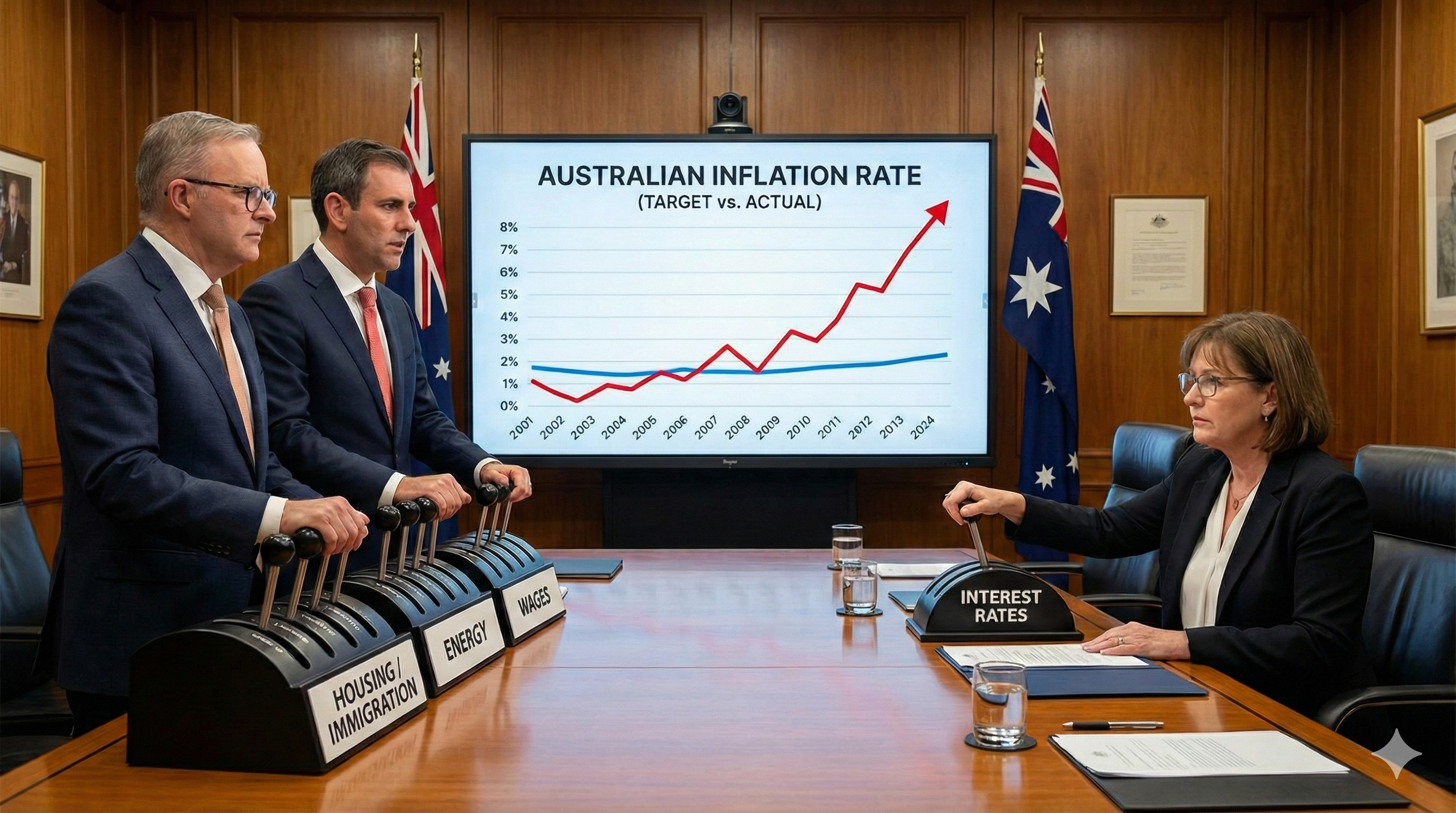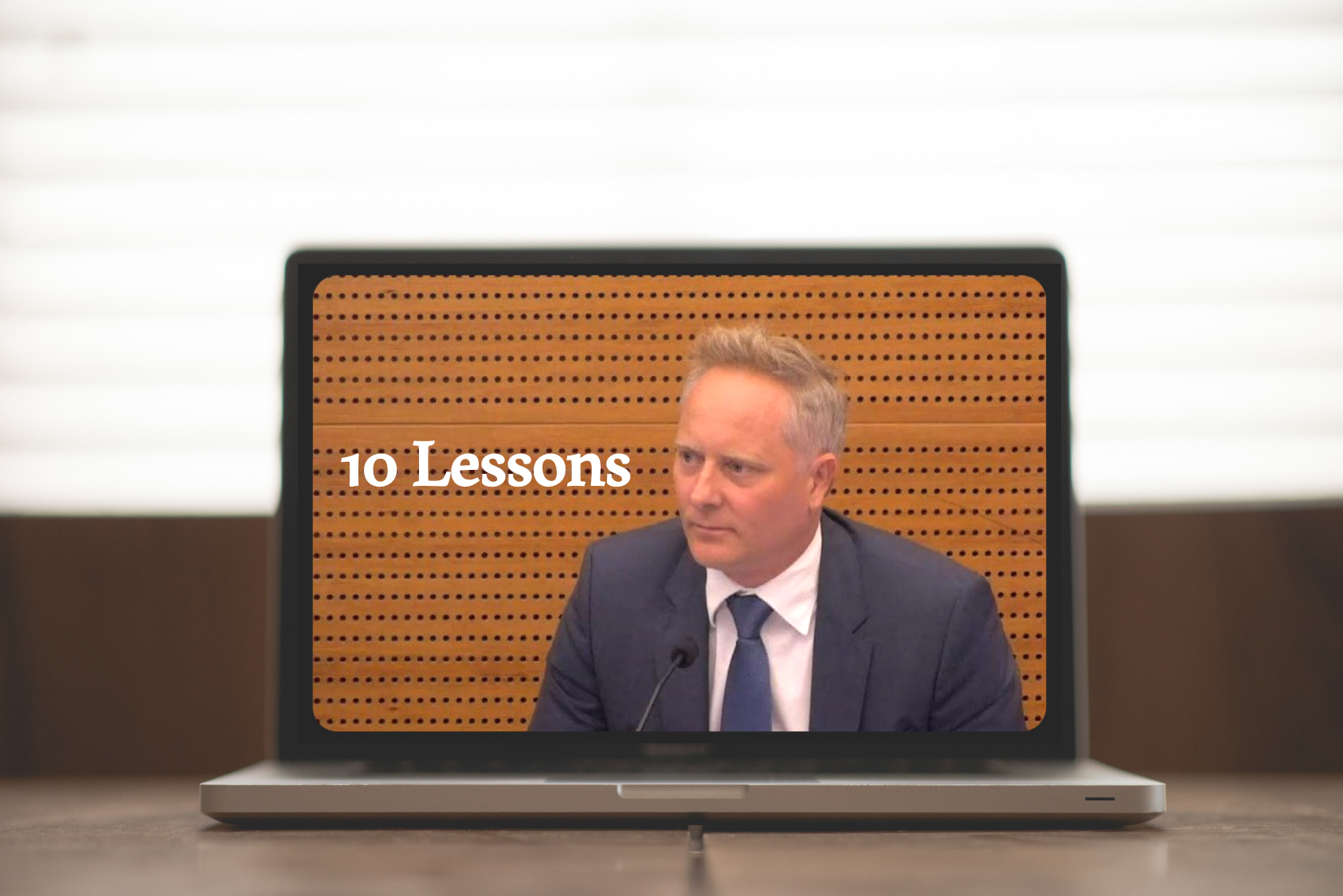10 Lessons from Henderson Maxwell's Royal Stuff-up
Yesterday's Royal Commission had all the elements for some great headlines: a celebrity taken down, a $500,000 stuff up, impersonating clients and fake degrees.
But what I want to talk about is managed accounts.
First, some context from Fairfax:
High-flying celebrity financial planner Sam Henderson's world came crashing down on Tuesday as the banking royal commission heard he instructed his employees to impersonate a client and misrepresented his tertiary qualifications.
Mr Henderson, a regular host on Sky News Business, also failed to disclose a conflict of interest and gave advice to one client that was described as "risible," the commission heard.
Client Donna McKenna, who is a Fair Work Commissioner, outlined just what it was like to be a client of Mr Henderson, a principal of a financial planning firm awarded “Practice of the Year”.
And from the AFR
Ms McKenna said she was immediately put off by Mr Henderson's hard sell of a self managed super fund loaded with fees that were far in excess of what she was currently paying. Ms McKenna said she had no interest of managing her own super and that Mr Henderson said: "We'll look after it".
...
Mr Henderson was also skewered for putting a large proportion of his client book into managed discretionary accounts that included direct shares and charged high fees.
It would seem to me that Henderson Maxwell is not unlike a range of other financial planning outfits in trying to bundle every client into a particular type of a managed account where:
- The fees are usually large (2%ish)
- The fees are often structured as personal advice fees rather than a product fee (which have some regulatory implications)
- The financial advisor runs the portfolio for you, often using direct shares
Some of these managed accounts are excellent - investment managers who have the experience and the capacity to research the stocks run the portfolios for the planning group. Direct share ownership can be tax advantageous. Having transparency is great. In the better cases, the total fees are closer to 1% than 2% and trading costs are cheap.
Other times these managed accounts are run by an adviser with a full book of clients to call and write plans for, accompanied by a newspaper and gut feel for research, picking stocks on a Friday afternoon at the pub. The trading fees are high, maybe the adviser gets "rebates" from the broker as a reward for having clients who pay a lot in brokerage.
In a typical case:
- platform costs are usually around 0.2%-0.5%,
- investment management fees are around 0.5-1.25%
- the adviser gets the rest.
If the adviser is also picking the stocks, then the adviser takes the investment management fees as well, probably doubling the revenue to the adviser. But the client has gone from having a full-time investment team running their portfolio to a part-timer planner who may not have the same experience in portfolio construction, risk mitigation or stock valuation as they do in financial planning.
The Upshot
There can be big differences on the investment side of managed accounts:
- At one end you get low fees, transparency and professional management.
- At the other end, you get high fees from an adviser with little investment process but a slick sales process.
For the high fee options, you usually need to be "sold" - a seduction process that will appeal to the heart rather than the head.
If you have a managed account, are thinking of getting one, here are my tips:
- Check the brokerage. It should be cheaper than you would pay with an online broker - probably much cheaper. If it is more then you may want to ask some questions about how payments are made and whether your planner gets kickbacks from the broker. Check how much the typical brokerage is for your size of account - for some accounts, this can be the largest cost. Brokerage is often hidden - the better managers will be upfront with the costs, the worse ones will pretend brokerage costs don't exist.
- Check the platform costs. You shouldn't be paying more than 0.5%.
- Check who is actually managing your money. If you are paying for professional investment management, make sure that it is not being done by a salesperson in their spare time rather than by experienced, dedicated managers.
- Check the investment process. There are a number of different investment strategies that work over time. The overwhelming majority of these have a process that is followed. When you see something like "XYZ planning is a style neutral investment manager looking to invest in investments that match its thematic view" what they are really saying is that they will buy whatever they want whenever they want and there is no real investment process. It may work out well. It often doesn't.
- Check the investment constraints. There should be some. You want to know that they can't bundle too much of your money into one investment, and so there should be constraints like "no more than x% in any one stock". You want to know that there are also limits to asset classes. For example, you don't want to see Cash: 0-100% Australian Equities: 0-100% as the limits - meaning that the investment manager can do whatever they want.
- Check your internal manager costs. If your adviser is putting you into other manager's products, make sure you understand whether there are also underlying costs. Say you are paying 1.25% for a managed account with adviser ABC which invests in a model portfolio run by a fund manager XYZ. In some cases the 1.25% will include XYZ's management fees, in other cases, XYZ's fee will be an addition to the 1.25%.
- Check performance fees and conditions. If you are paying performance fees then you should have lower base fees. You should also have a highwater mark and a benchmark that actually reflects the return the portfolio should make.
- Check investment performance. This should be of the model portfolio, assessed by a third party - probably the platform provider. Be very wary of advisers who offer (as evidence of performance) individual accounts not assessed by a third party - these can be "cherry picked" and may include assets that typical portfolios didn't own. Past performance should not be the only thing you look at, but it can be helpful.
- Check risk metrics. Your investment manager should have some. Now, I know there are issues with risk metrics and they don't tell the full story. However, if your manager isn't even watching ratios like volatility, relative return, tracking error, sharpe ratios then it is a sign that you have a part-timer running your money. High returns are good, but if your investment manager is using your money like he/she is at the casino then you want to know.
- Check related parties. Who else gets paid. Some firms use low fees in one part of an operation as a bait for other divisions to make money. Accountancy fees, brokerage fees, platform fees, life insurance commissions, mortgage broking fees can all generate tens of thousands for financial organisations. Say you have $400,000 in an industry fund paying 0.8% ($3,200 per year). You might move to a managed account provider at 1.1% ($4,400 per year), with the tax benefits / transparency / customisation more than paying for the 0.3% difference in fees. However, if you are also paying $5,000 per year in accountancy costs on a new self managed super fund and another $5,000 in life insurance commissions to then the equation might not look so balanced.
Damien Klassen is Head of Investments at Nucleus Wealth.
The information on this blog contains general information and does not take into account your personal objectives, financial situation or needs. Past performance is not an indication of future performance. Damien Klassen is an authorised representative of Nucleus Wealth Management, a Corporate Authorised Representative of Integrity Private Wealth Pty Ltd, AFSL 436298.







